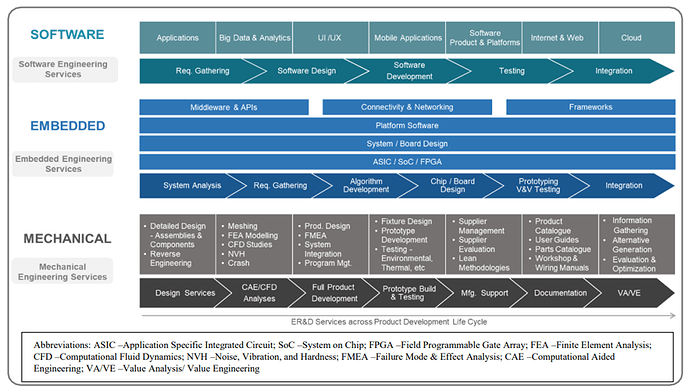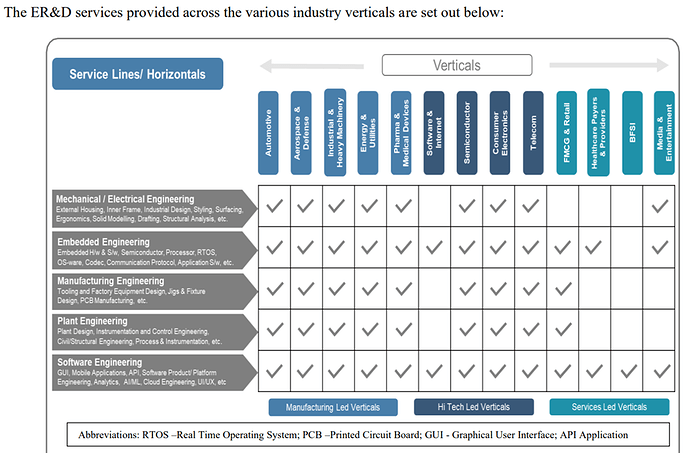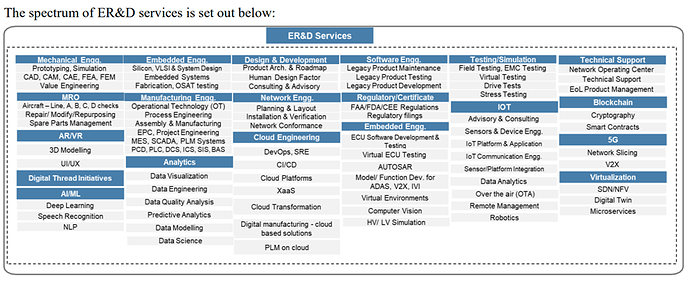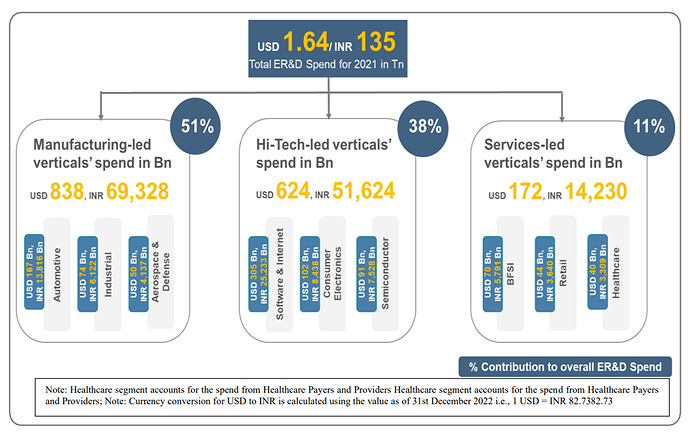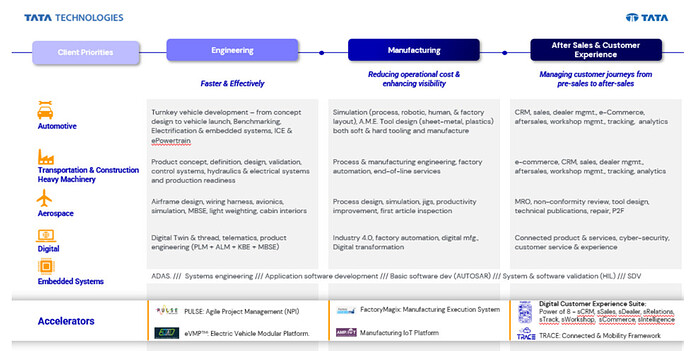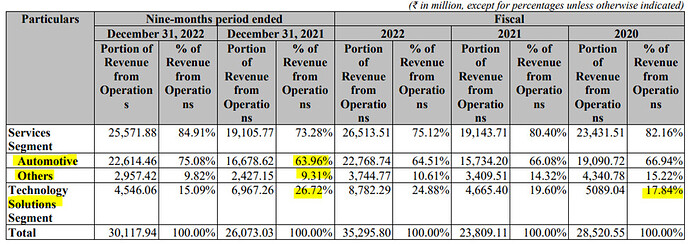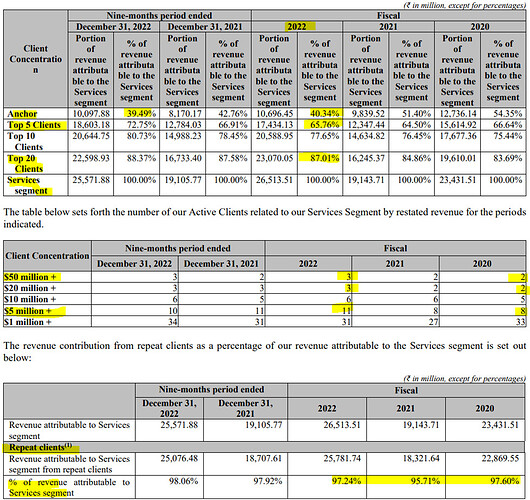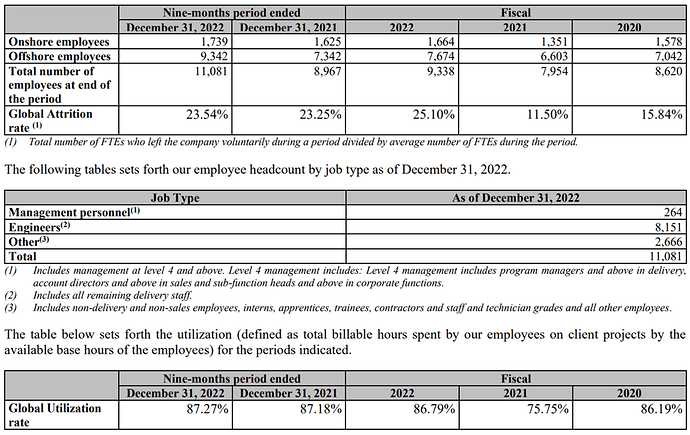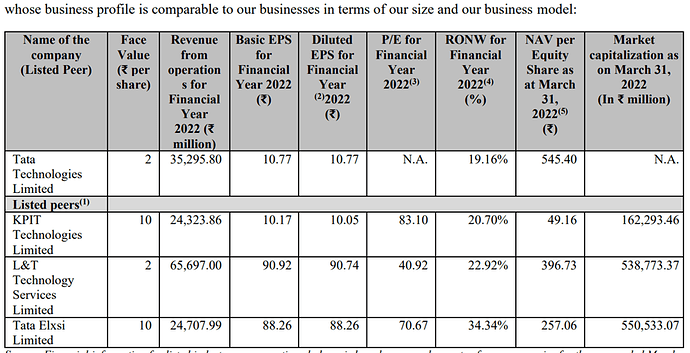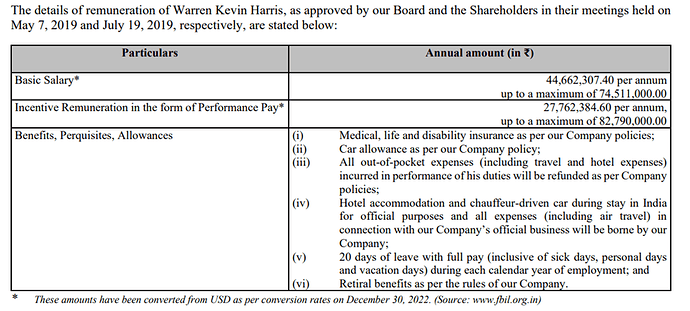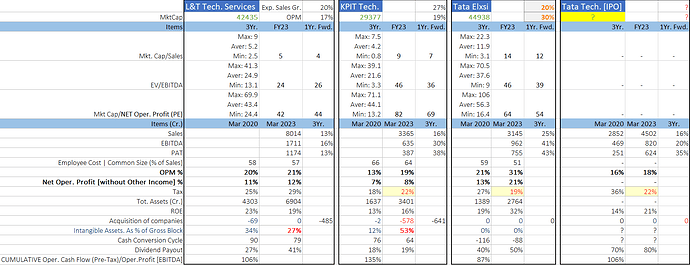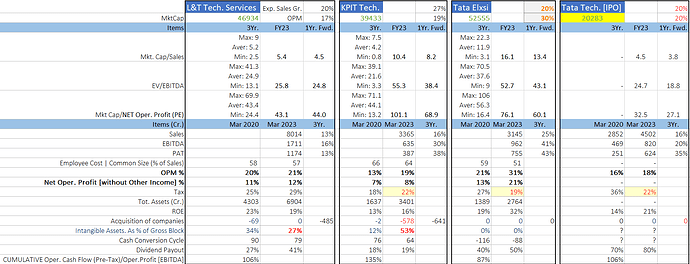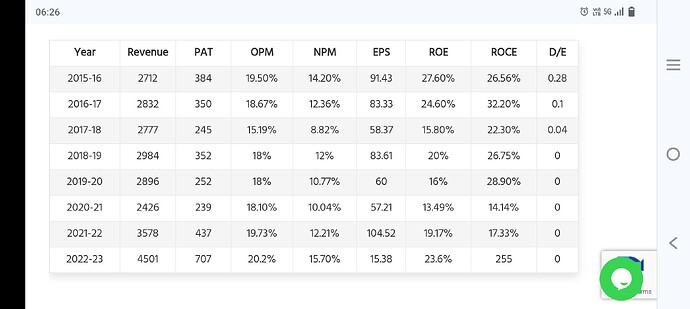Tata Tech is planning an IPO. It is a well-run company in a very interesting space. Here is a brief overview of the company’s business.
About the company
Tata Technologies Limited is an engineering and product development services company that provides engineering solutions and services to various industries such as aerospace, automotive, industrial machinery, and consumer goods. The company is a subsidiary of Tata Motors, a part of the Tata Group, one of the largest conglomerates in India. Tata Technologies was founded in 1989 and is headquartered in Pune, India.
Tata Technologies’ revenue is primarily generated from its engineering services business, which accounts for around 60% of its total revenue. The company’s key clients in this segment include Tata Motors, Jaguar Land Rover, and Airbus. The remaining revenue comes from its product development business, which includes the development of products such as automotive components and consumer goods.
Tata Tech’s competitive advantage lies in its deep engineering expertise and its ability to provide end-to-end product development solutions to its clients. The company’s engineering services are spread across the entire product development cycle, from conceptualization to product launch, and it has a strong track record of successfully delivering complex projects to its clients.
It also has a global presence, with operations in over 20 countries, including the US, UK, Germany, China, and India. The company’s global delivery model enables it to provide cost-effective engineering solutions to its clients while leveraging the best talent worldwide.
The financial performance has been consistent over the past few years. The company reported a 25.1% growth in revenue to 4,414.18 crs in FY 2022-23 as against 3,529.57 crs in FY 2021-22. Revenue from the sale of services increased by 33.2% to 3,535.22 crs in FY 2022-23 compared with 2,654.84 crs in FY 2021-22.
Profit before Tax (PBT) stood at 796.15 crs during FY 2022-23 compared with 586.83 crs during the previous financial year, registering an increase of 35.7%. Profit after Tax (PAT) increased by 42.8% to 624.03 crs in FY 2022-23 compared with 436.97 crs in FY 2021-22.
The engineering and product development services industry is expected to grow rapidly in the coming years, driven by increasing demand for engineering solutions and services from various industries. According to a report**, the global engineering services outsourcing market is expected to grow from $204.9 billion in 2021 to $316.8 billion by 2026, at a compound annual growth rate (CAGR) of 9.1%.**
Strengths:
It has deep expertise in the automotive industry. Its comprehensive portfolio of services addresses product development and enterprise optimisation needs of traditional OEMs and new energy vehicle companies. It has differentiated capabilities in EVs, which are the new-age automotive trend. The company provides end-to-end solutions for manufacturing, development, and after-sales services for EVs.
The company possesses strong digital capabilities bolstered by proprietary accelerators. These are designed to help OEMs and tier 1 suppliers manage their entire digital product life cycle and engage their customers throughout the product journey.
It has a global delivery model that enables intimate client engagement and scalability.
It has a proprietary e-learning platform that helps them leverage their manufacturing domain knowledge, allowing them to tap into large upskilling and reskilling markets.
Risks:
The concentration of revenue with top 5 clients: The business derives a material portion of its revenues from its top 5 clients as per revenue generated in Fiscal Year 2022. If any or all of these top 5 clients face any deterioration in their business, it could adversely affect the company’s financial position, cash flows, and results of operations.
The revenue is dependent on clients concentrated in the automotive sector: Any economic slowdown in this segment can adversely impact the financial condition and operations of the business. The company expects a significant inflow of future revenue from new energy vehicle companies, many of which may be start-ups. There can be uncertainties about their funding plans, future roadmaps, growth capabilities, creditworthiness, and ownership changes.
Failure to attract and retain talent: The success of the company is largely dependent on its skilled engineers and management team. Failure to retain and attract talent may decline in profitability. An increase in wages and employee benefits can prevent the company from maintaining its competitive advantage.
Protection of intellectual property: The company may be subject to third-party or client claims of intellectual property infringement. It may also be unsuccessful in protecting its intellectual property rights.
The company has recently expanded its offerings to the education business. If it is unable to achieve the anticipated returns, it may have a material effect on its financial condition and operations.
Global collaboration model:
Their Global Delivery Execution Model (GDEM) is designed around the ‘follow the sun’ workflow. Project teams collaborate across off-shore and on-site locations worldwide, integrating seamlessly to deliver maximum progress and efficiency for every project. When a Swedish automotive business collaborated with them for their first plug-in hybrid sports car, Tata leveraged its off-shore team in India to support the team in Sweden and UK while engineering this carbon fibre-based award-winning product for global markets. Off-shore teams can develop or directly connect with existing company-wide systems to engineer products, execute manufacturing and manage resources. On-site team members liaise between the customer and off-shore teams, assign resources, manage the people supply chain, review projects and report on KPIs.
Industries that Tata Technologies works in:
- Automotive Industry
- Industrial Heavy Machinery
- Aerospace Industry
- Education Industry
Automotive Industry:
The automotive industry is embracing an unprecedented transformation as companies focus on launching new products faster. The race is on to adapt, innovate and deliver a connected, autonomous, shared, and electric future.
Their deep manufacturing domain knowledge and understanding of the physical and digital layers of product engineering enables them to deliver end-to-end solutions that helps manufacturers launch competitive products, optimize operations, and improve customer journeys.
Their automotive offerings cover the entire product value chain across automotive engineering, manufacturing, and customer experience areas. This includes outsourced turnkey electric vehicle engineering solutions, product benchmarking, rightweighting, simulation and validation, embedded systems, AUTOSAR, hardware-in-the-loop validation as well as connected and autonomous vehicle solutions. Their digital enterprise offerings enable digital transformation of entire operations, digital twin, digital thread, manufacturing engineering, and Industry 4.0 solutions aimed at helping companies manufacture products faster and optimize the cost of operations.
Business Challenges Solved in Automotive Industry by Tata Technologies:
- Develop more competitive products and solutions
- Reduce product time to market
- Optimize product development costs
- Enable the electrification of your product portfolio
- Improve customer experience
- Enable end-to-end visibility across the product lifecycle
End-to-End Electric Vehicle (EV) Engineering Solutions:
Their end-to-end solutions for future EVs cover engineering, manufacturing, and post-sales service to deliver a great experience to the digital customer of the future and help manufacturers perform in the marketplace.
Turnkey Full Vehicle Development Solution for Automotive:
Their TREaD (Turnkey Research, Engineering, and Development) framework offers outsourced full-vehicle development solutions, from concept to reality, helping companies launch competitive vehicles faster.
Embedded Engineering Solutions:
Their embedded engineering solutions cover the entire V cycle of product software development covering application development – MBD, SIL, MIL and HIL, & platform software – AutoSAR, SDV and bespoke platforms, complemented by our mechatronics DNA.
HIL Testing & Validation Solutions:
Their Hardware in the Loop (HIL) testing and validation solution help manufacturers develop reliable products and optimize product testing time and cost, thereby helping them launch competitive products with agility.
Model-based Systems Engineering Solutions:
Their Model-based Systems Engineering (MBSE) solution is designed to enable companies to bridge gaps between physical and digital product designs and bring in a new level of visibility, connectivity, and traceability across every aspect of the system lifecycle.
Digital Transformation Solutions
Their digital transformation solutions cover the key areas of digital product development, digital supply chain, digital manufacturing, and digital customer experience. It enables enterprises to connect the digital thread and become smart, intelligent, and connected enterprises for the new normal.
Digital Manufacturing Solutions:
Their digital manufacturing solutions help manufacturing companies adopt Industry 4.0 technologies across their product development value chain and manufacture competitive products while optimizing cost and improving productivity.
Digital Customer Experience Solutions:
Their digital customer experience solutions enable companies to manage their entire omnichannel customer journey offering the flexibility of virtual product interaction with the convenience of buying products online, enabled through digital applications and mobile apps.
Enterprise transformation SAP S/4 HANA Solutions:
Their SAP S/4 HANA enterprise implementation and transformation solutions are designed to help organizations seamlessly implement, migrate & upgrade to SAP future-ready ERP platform leveraging their extensive ERP experience, accelerators, and tools.
eVMP (Electric Vehicle Modular platform):
Their smart, parametric, and modular electric vehicle platform enables manufacturing companies to launch better products faster by reducing time to market by up to 6-12 months while optimizing platform development time and cost. Its offers one-click scalability for rapid configuration, compliance with various safety norms, and scalability across vehicle sizes.
RightWeighting 5R:
Their 5R Rightweighting methodology enables manufacturing companies to optimize product weight and engineer products that deliver the right performance at the right price, by applying the right amount of the right material in the right place.
Pulse:
Their agile product data and program management tool with 12+ modules for end-to-end ER&D process tracking enables OEMs to enhance data visibility across the product development lifecycle and ensure timely and effective program management for the launch of competitive products.
Factorymagix:
Their manufacturing execution system tool enables manufacturing companies to ensure real-time data visibility of planned manufacturing operations helping them improve operational efficiency and productivity.
AMP.IOT:
AMP.IoT is a suite of modular applications designed to cater to the Industrial IOT requirements of the manufacturing industry. It offers features like asset tracking, enhancing OEE, predictive analytics, plant benchmarking and monitoring, digital work instructions, and remote monitoring helping companies improve shop floor-to-top floor coordination, and manufacture better products.
CHIP (Centralized Hybrid Integration Platform):
CHIP is an enterprise hybrid integration ecosystem designed to enable manufacturing companies to connect and maps applications, data, and devices in the cloud and on-premises on a unified, extensible platform. Built on open source, the frameworks enable companies to integrate existing applications, improve data visibility, and ensure better efficiency and productivity.
Power of 8:
Their power of 8 suites of modular digital applications is designed to enable OEMs to manage the entire Omni channel customer and dealer journey starting from customer leads to showroom visits, to sales and post-sales service experience.
TRACE (Tata Technologies Rapid Connected Environment):
Their IoT-led connected vehicle platform enables them to develop & deliver end-to-end connected services for passenger vehicles, commercial vehicles, and industrial heavy machines, as well as telematics solutions for fleet management. Deployed on over 7000+ vehicles, it enables manufacturing companies to deliver a great user experience.
Visimatic:
Their digital accelerator Visimatic is an enterprise-ready suite of machine learning solutions for different vertical businesses, empowering data scientists and business users to accelerate time to value.
Industrial Heavy Machinery
Improving prediction accuracy:
Turn your data into intelligent information. Their automated reporting and real-time analytics enable you to predict potential hurdles throughout the product lifecycle and make strategic decisions faster.
Enable end-to-end visibility across the product lifecycle:
Their suite of solutions cuts across physical and digital touchpoints to create seamless customer journeys, from design to after-sales.
Aerospace Industry:
As the world recalibrates its relationship with air travel, the aerospace industry is under pressure to develop innovative, high-precision products and experiences that reduce carbon emissions, increase productivity and improve passenger experiences.
Their aerospace offerings cover engineering, manufacturing and customer services. They work with a mature global engineering engagement model to deliver fast and optimized solutions for aerospace engineering analysis and modelling, continuous engineering support, cabin interiors design and development, passenger-to-freighter conversion, tooling as well as maintenance, repair and overhaul (MRO).
They leverage advanced technologies for predictive maintenance, tool design, data analytics, factory automation, process design and simulations, while their customer service solutions transform digital journeys into seamless customer experiences.
Aerospace Solutions provided by Tata Technologies:
Aerospace Engineering Solutions:
Their comprehensive engineering, design & development solutions for the airframe, cabin interiors, tooling, and plane-to-freighter conversion helps aerospace companies engineer better products at an optimal cost.
Aerospace MRO solutions
This suite of maintenance, repair, and overhaul products and solutions is designed to help Aerospace companies service their products faster and at an optimal cost for enhanced competitiveness in the marketplace.
Model-based Systems Engineering Solutions
Their Model-based Systems Engineering (MBSE) solution is designed to enable companies to bridge gaps between physical and digital product designs and bring in a new level of visibility, connectivity, and traceability across every aspect of the system lifecycle.
Education Industry:
As manufacturers seek to accelerate towards Industry 4.0, they need engineers who can engineer products of the future and deliver effective digital transformation. To equip the next generation of talent with the required skills, businesses need a partner that offers the relevant training, resources and support.
Tata Technologies have developed upskilling tools, training and courses that leverage their manufacturing domain knowledge and bridge the gap between industry and academia.
They work with colleges, universities and governments to equip the next generation of engineers and technicians with the skills that are required by the global manufacturing industry. They also offer a digital learning system through their proprietary iGET IT offering to corporations and individuals to address their training requirements.
Technical Alliances
Tata Technologies enter into various partnerships and alliances with their technology partners to augment their capabilities in providing solutions, technology and manpower to their clients.
Their third-party software vendor partnerships provide them with reselling opportunities. For example, through their partnership with Mobility in Harmony (MIH) they are co-developing various software and hardware platforms for EVs.
They partner with Logility for supply chain management solutions, where there is a mutual provision of consulting and solution implementation and integration with other enterprise systems.
Similarly, partners like Codincity and Kovair complement their capabilities with cloud and Application Lifecycle Management (ALM). Their long-standing relationship with third-party software vendor partners (such as Dassault Systemes and Siemens Industry Software Inc. among others) on PLM, MES and ERP allows them to select and implement full solutions (including systems integration) for their clients.
They are an important sales channel for their third-party software vendor partners, given their understanding of client requirements along with their offering of presale and post-sale support to the client. In addition, they enter into partnerships that also focus on PLM, MES and ERP, IOT, Industry 4.0 and data and digital customer experience.
About Tata Technologies IPO:
Tata Technologies has announced its plans to launch an initial public offering (IPO) in India. The company filed its draft red herring prospectus (DRHP) with the Securities and Exchange Board of India (SEBI) in January 2022**.** The IPO is expected to raise up to INR 1,200 crore ($160 million), with the company issuing fresh shares worth INR 600 crore ($80 million) and the remaining INR 600 crore ($80 million) coming from the sale of existing shares by the company’s promoters, Tata Motors and Tata Capital. The IPO will consist of a fresh issue of up to 4.76 crore equity shares and an offer for sale of up to 4.76 crore equity shares by Tata Motors and up to 2.38 crore equity shares by Tata Capital. The price band and other details of the IPO are yet to be announced by the company.
Tata Technologies plans to use the funds raised through the IPO for debt repayment and general corporate purposes. Additionally, the company plans to use the funds to invest in technology and digital capabilities to enhance its product development and engineering services.
The key objectives of the IPO by Tata Technologies are as follows:
Raising Funds for Growth Plans:
One of the main objectives of the IPO is to raise funds to support the company’s growth plans. The fresh issue of shares will provide the necessary capital for the company to invest in new technologies, expand its offerings, and make potential acquisitions. The company plans to use the funds to focus on strengthening its capabilities in areas such as artificial intelligence (AI), machine learning (ML), and digital twin.
Providing an Exit Opportunity for Tata Motors:
Tata Motors, the parent company of Tata Technologies, plans to reduce its stake in the company by up to 26% through the offer for sale. This will provide Tata Motors with an exit opportunity and allow it to divest its stake in Tata Technologies. The IPO is expected to fetch a better valuation for Tata Motors compared to a sale to private equity firms.
Enhancing Brand Value and Visibility:
Going public through an IPO can enhance the brand value and visibility of a company. It can help to establish the company as a credible player in the market and improve its reputation among stakeholders, including customers, employees, and investors. The IPO will provide Tata Technologies with an opportunity to showcase its expertise and capabilities in the engineering and product development digital services space.
Broadening the Investor Base: Going public can help a company to broaden its investor base and increase the liquidity of its shares. The IPO by Tata Technologies is expected to generate strong interest from institutional and retail investors, both in India and abroad. This will provide the company with a diverse set of investors and increase the visibility of its shares in the market.
Management:
Chief Executive Officer and Managing Director: Warren Kevin Harris
He holds a bachelor’s degree in engineering (technology) from the University of Wales Institute of Science and Technology, the University of Wales. He holds a doctorate in philosophy (honoris causa) from Amity University, Uttar Pradesh. He has completed the advanced management programme from Harvard Business School. He is a chartered mechanical engineer registered with and a member of the Institution of Mechanical Engineers.
He has been associated with the Company since October 1, 2005. He is currently a director of certain of the Subsidiaries, namely, Cambric Limited, Bahamas, INCAT International Plc., Tata Manufacturing Technologies (Shanghai) Co., Limited, Tata Technologies de Mexico S.A. de C.V. (under liquidation), Tata Technologies Europe Limited, Tata Technologies, Inc., Tata Technologies Nordics AB (previously known as Escenda Engineering AB), Tata Technologies Pte Ltd and Tata Technologies S.R.L.
Chairman: Ajoyendra Mukherjee
He holds a bachelor’s degree in engineering (electrical and electronics) from the Birla Institute of Technology and Science.
He was previously associated with Tata Consultancy Services Limited for almost four decades, where he held positions such as the head of business operations in Eastern India, Middle East and Africa, Switzerland, global head of CSR function, global head of energy and utilities practice and executive vice president and global head of human resources.

